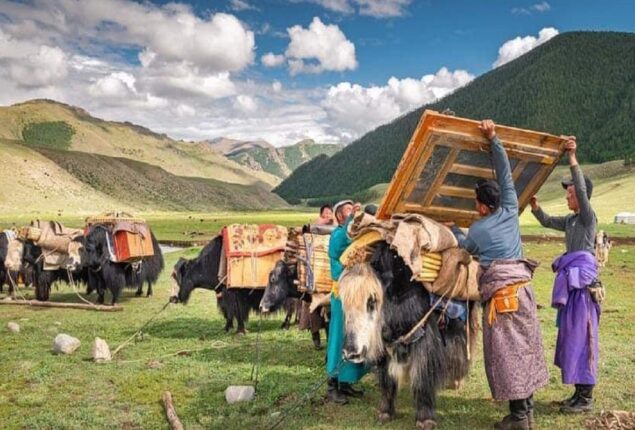Mongolian protesters storm palace
Protesters in Mongolia's capital, Ulaanbaatar, demonstrate against alleged coal sector corruption and...

Mongolia’s herders are squeezed between China and Russia
Dulamsuren Demberel, a 58-year-old herder who lives eight hours from Mongolia’s capital, has trouble making ends meet each month.
Prices of wheat and rice, necessities Mongolia’s herders can’t produce, have skyrocketed due to the Ukraine war, with overall inflation reaching 14.5%.
Even bad is the 40% surge in coal prices and shortages blamed on dishonest officials stealing 385,000 tonnes of coal for China.
In Mongolia, where winter temperatures often plunge below -35°C, 60% of the population lives in gers, traditional tents heated by coal-powered stoves. Herders like Demberel move their flocks and gers numerous times a year.
“Last time I went to the soum, they weren’t even selling coal,” Demberel said Al Jazeera, referring to the neighboring provincial district.
Demberel, whose husband’s ill health prevents him from working, finds it hard to justify traveling to Ulaanbaatar to sell sheep, wool, and milk as gas prices climb. Mongolia exports almost all of its oil to China because it can’t process it cost-effectively.
While Mongolia’s exports to China have dropped in recent months due to COVID-19 restrictions, gasoline prices have soared as much as 65% since Russia’s war in Ukraine began in February.
“Unless you sell more than 30 sheep, it’s not worth it,” Demberel remarked.
“Too far.” Gas and other costs would make it the same as selling in the soum, unless you sell a lot.
China and Russia, Mongolia’s two big neighbors, have historically governed its vast landmass.
While Russia’s war in Ukraine has led energy costs to soar, China’s failing economy has reduced trade, and some Mongolians mistrust their government’s coal exports to China.
60% of Mongolia’s energy, gasoline, aviation fuel, LPG, and diesel come from Russia.
China accounts for 80% of Mongolia’s exports, 60% of imports, and 40% of GDP (GDP). Visit any store in Mongolia and you’ll see Chinese and Russian text on the box.
A 57-year-old Ulaanbaatar businessman said, “Of course, we’re dependent on China and Russia.”
We rely on China’s economy and Russia’s electricity. 90% of our coal and gasoline comes from Russia. China supplies all other consumer items.
Mongolia gained independence from China’s Qing Dynasty in 1921. Mongolian People’s Republic was a Soviet satellite until the early 1990s.
Tuva, Buryatia, and Altai are now part of the Russian Federation, while China governs Southern Mongolia as Inner Mongolia Autonomous Region.
Moscow and Beijing influence Mongolia despite its independence. China closed Mongolia’s border after the Dalai Lama’s 2016 visit. The Dalai Lama has not been invited back to Mongolia, despite being the spiritual leader of the Tibetan Buddhist faith.
Catch all the Business News, Breaking News Event and Latest News Updates on The BOL News
Download The BOL News App to get the Daily News Update & Follow us on Google News.